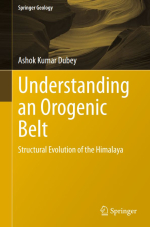Добрый день, Коллеги. Важное сообщение, просьба принять участие. Музей Ферсмана ищет помощь для реставрационных работ в помещении. Подробности по ссылке
Understanding an orogenic belt. Structural evolution of the Himalaya / Понимание орогенных поясов. Структурная эволюция Гималаев
Structural geology is the study of deformation features in rocks from microscopic to map scale. The required data are collected in field and supplemented by laboratory studies, aerial photographs, satellite imageries, and subsurface data (mostly obtained by geophysical methods). A geologist must explore an area with an open mind and interpretations and hypothesis must be based on actual field observations. Any evidence, however small, contradictory to a popular belief or hypothesis must not be ignored and should be taken into account in the final interpretation. Geophysical investigations are useful but some of the techniques are based upon certain assumptions that allow alternate explanations for the same data, in many cases. One such example can be cited from the Himalaya where deep seismic sounding (DSS) studies were performed under an International Geodynamic Project and investigations were carried out along the Tien ShanPamirs-Karakoram-Himalaya geotraverse. A number of lithospheric sections were drawn and these sections show very well-marked steep or vertical faults that reach to a depth of ~90 km and displace the Moho (Kaila et al. 1978). However, later subsurface sections that emerged after popularization of the thin-skinned thrust tectonics model illustrate a marked basal decollement with a number of splay thrusts (Allegre et al. 1984). The maximum possible error in case of dip measurements can be 90° and that can be seen in the available sub-surface sections!<...>




